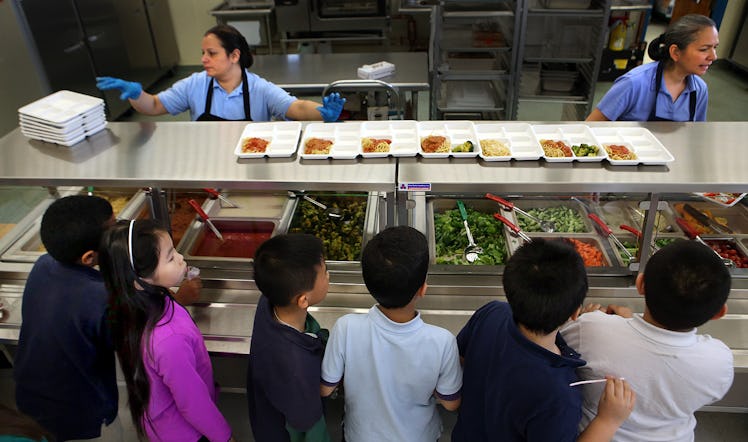Massachusetts Is The 8th State To Give Kids Free Lunch
It makes a huge difference.

Nine million children were recently guaranteed a substantive midday meal as Massachusetts joined seven other states in providing universal free school meals to kids who attend public school. It’s a huge win for students in the state — again and again research has shown that a healthy diet helps children sleep better and likely improves brain health.
Massachusetts’ school lunch program is funded with both federal and state dollars, some of which will come from a voter-approved amendment that will levy a 4% tax on income over $1 million. That tax is expected to raise $1 billion for the state next year and will not only help feed students but also fund other improvements to the states’ education and transportation systems.
Previously, a family of four in Massachusetts had to make less than $52,000 yearly to qualify for free or reduced-price meals. Because the state still boasts one of the highest cost-of-living scores in the United States, that left a lot of families squeezed to pay an average of $3.50 per child each day for school lunch. And with 26.2% of Massachusetts households facing food insecurity, according to the food assistance advocacy group Project Bread, even asking parents to pack healthy lunches for their kids is a big request for a lot of families.
For more than two years, beginning soon after the onset of the COVID-19 pandemic, the U.S. Department of Agriculture took worry about feeding kids breakfast and lunch off of parents’ plates. Kids were offered free meals during the week regardless of household income until funding for the program ran out in June 2022. Since then, school lunch debt has exploded as more kids come to school without a packed lunch or money to pay for school lunch.
Increasingly, school districts are caught holding the bag as more than $19 million in unpaid meal debt has accrued over the past year, according to a recent survey from the School Nutrition Association. With K-12 public schools underfunded by an estimated $150 billion annually, school districts typically don’t have the financial margin to write off debt without additional assistance.
For decades, schools resorted to lunch-shaming kids by providing visibly inferior meals to students who had lunch debt, requiring students to work off their debt with cafeteria labor, or branding indebted students with stickers or stamps to pressure them to pay off the amount owed. The practice has rightly come under fire in recent years and is hopefully on its way out.
With states left on their own to continue universal meal programs, just California, Colorado, Maine, Michigan, Minnesota, New Mexico, Vermont, and now Massachusetts have found solutions to continue the program on their own.
Currently, 23 states have introduced bills or formed commissions to support Healthy School Meals for All policies, but even if all of those efforts were to find success, that would still only provide universal free lunch overage to approximately two-thirds of the country’s students.